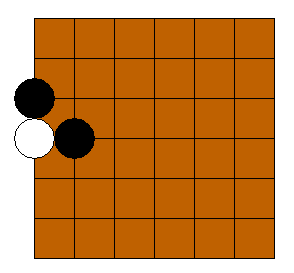
Figure 1. Winning position for white. Note that all fields are connected by straight (horizontal or vertical lines). This is essential for a winning position.
Kanga was invented in 2002 when Tijn van der Zant and Marco Wiering
were sick of playing Go and Pente all the time. The question was whether
a real cool game could be invented instead. So they thought of many ideas,
but most of them did not work out well when playing. Some of them were
pretty dull, static. and predicable, and others were always winning for
the player who started the game. After some time they thought it would
be cool to make a game in which the goal is to make a connected line from
one side to the other side. This was the main idea of the game, but some
additional rules to make the game more attractive were invented after that.
This led finally to the game Kanga. The game of Kanga is really very dynamic,
one needs stategic and tactical knowledge to play it, and the game can
change very rapidly, thereby making it less dull than most other games.
The rules are quite simple, but it still requires a lot of thinking to
make the best moves, just like in Go. The name Kanga was discovered, because
when the inventors
played the first game, a song was playing on the radio with the
word Kanga repeated several times. If anyone knows which song it is, please
contact Tijn van der Zant
There are few rules needed to understand the game. First of all,
the game is played on a Go-board, where two players play by putting pieces
on the crosspoints of lines (lust like in Go). The minimal configuration
is a 7x7 board.
The first rule is that a player wins if (s)he made a line from one
side to the other. The following figure shows a winning position for white:

The second rule is the alternative Go-rule. If black, for example,
surrounds a single white piece from all four (horizontal and vertical)
sides, s(he) can take the the white piece from the board. The following
figure shows an example. Black takes white's piece, and white can take
it immediately back (which is different from the Go-rule in Go!). Note
that this makes infinite loops possible, the player who has the best position
can either be satisified with remise, or should play an alternative move.



Note that this also holds for the corners, which can be taken by surrounding a piece on only two sides


At the sides, stones should be surrounded at three sides (note that after
taking the white piece of, white can put its piece back on the same place, and
black cannot remove it, which is different from Go):


The third rule is that an odd number of stones (more than 1) in a row (horizontal,
vertical, or diagonal) can be taken of by surrounding it at both sides
of the chain. The following figures demonstrate this:


This can also be done diagonally, and by surrounding it by one piece,
if the line is connected to the border. See the next figures:


Those were all the rules. Enjoy the game! If you play it on a 7x7 board,
the game is still quite simple, but try playing it on a 13x13 board!
This game has been invented by Tijn
van der Zant and Marco Wiering.
They are interested in artificial intelligence, game playing, robotics,
machine learning, and weird music.
Maybe we are going to build software to play the game. We are thinking
about using reinforcement learning with neural networks to let the computer
learn the game. If you are interested in this, please contact us.
Contact: Tijn van der Zant or Marco
Wiering
For other games see: Gamestalks
last updated: April 2003